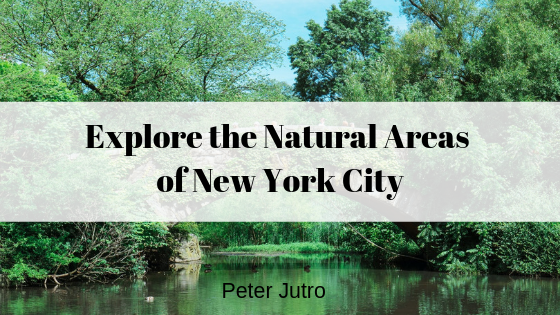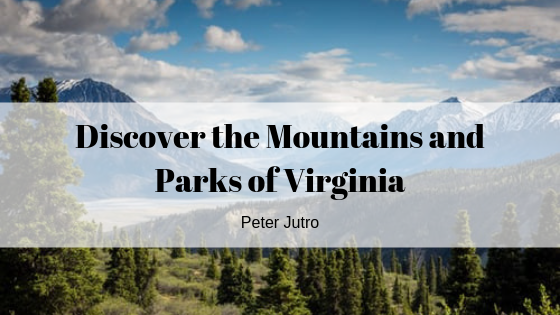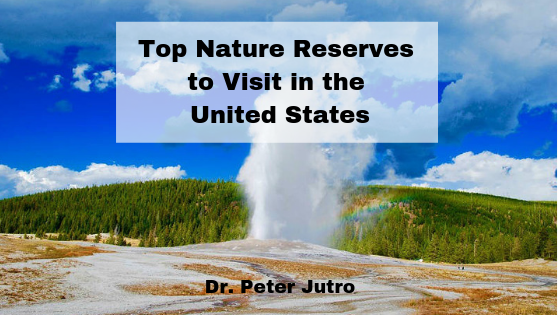
Explore the Natural Areas of New York City
When you think of New York City, you think of city life, skyscrapers, Broadway or the Statue of Liberty. If you asked someone about the city’s natural areas, you could get a puzzled look. Yet, if you ask someone about Central Park, then you receive a nodding head. For most, Central Park is a place to go for exercise, whether going for a run or kayaking on the lake. Many are unaware of the number of natural areas within Central Park or the number of natural areas in and around the city. In fact, there are natural areas in the five boroughs that make up New York City, including forests, wetlands, meadows, ponds, marshes, and ravines. Let’s take a look at the most significant natural areas.
- Central Park – For many, this 750-acre park is their only chance to experience a woodland. In 1858, Central Park (the Park) became America’s first landscaped public park. It’s home to over 230 species of birds and has eight “quiet” zones. What is surprising is the number of places you can go to experience ecosystems with hands-on activities led by the Park’s Conservancy educators. There a nearly 50 areas to explore! For example, the North Woods has the most secluded ravines and is perfect for birding. The Harlem Meer offers a variety of fish, waterfowl, and turtles. Also, the North Meadows Butterfly Gardens provide habitat for Monarch Butterflies and is home to two species of milkweed, which is a food source for Monarchs and caterpillars.
- Brooklyn Botanical Garden – Just like the Central Park, the New York legislature set aside acreage to protect green space from being swallowed up by concrete and steel. The park offered the very first children’s garden program, where children could grow their own vegetables and plants. It’s also home to the Japanese Hill-and-Pond Garden, the first public Japanese garden in the United States. In addition to numerous gardens, you’ll find conservatories that include the Desert Pavilion and the Aquatic House and Orchid Collection.
- Staten Island Greenbelt – This 2,800-acre greenbelt consists of public and private land located in central Staten Island – the largest park in New York City. The mission of this parkland is to promote and sustain it through education, research, and conservation. You’ll find a range of ecosystems from forests to wetlands with programs for each one. There’s also a recreation center, audio hiking tour, native plant center, and a carousel.
- Forest Park – Located in the Borough of Queens, it covers almost a square mile, with some 180 acres densely wooded. The park sits on a glacial moraine left behind when the last glaciers receded from the New York City area some 10,000 years ago. The noted landscape designer, Frederick Law Olmstead (also famous for the design of Central Park, the grounds of the U.S. Capitol, Stanford University, Mount Royal Park in Montréal, and many others) helped layout Forest Park. Within the park, one can find hiking trails, horse trails (stables are located just outside the park), a stunning winding roadway perfect for bicycling (that is closed to vehicles much of the time), and on one of its boundaries a historic carousel. The park is replete with resident bird life, and over 100 species of migratory birds can be found in the park at different times of year. Turtles, frogs, toads, butterflies, cicadas, raccoons and skunks abound as well. When in the park, it’s hard to believe that one is actually in New York City.
- Jamaica Bay Wildlife Refuge – An area of over 9,000 acres located in both Brooklyn and Queens, makes you forget that you are near any city, let alone actually in New York City. Easily reached by subway, it is part of the Gateway National Recreation Area and is the only wildlife refuge within the National Park System. This area offers extraordinary bird and other wildlife watching opportunities and the ability to experience sand dunes, salt marshes, and woodlands. A visitor center is located in Broad Channel, a small maritime community in Jamaica Bay, from which you can take guided tours or go hiking. Boat rental is available at many points around the bay.

Discover the Mountains and Parks of Virginia
Whether visiting Virginia for vacation, exploring your own state, or simply passing through the state, you should strive to allow time in your schedule to explore some of Virginia’s many impressive mountains. Virginia’s mountains are part of the Appalachian range that runs from Alabama into Canada. Virginia’s tallest mountain at 5,729 feet is Mt. Rogers (although Thomas Jefferson wrote that not only were the Peaks of Otter the highest mountains in Virginia, but he speculated that they might be the highest mountains in North America). The subject of countless works of art from songs to paintings, the mountains in this state are sure to satisfy tourists, locals, and passersby alike. Though Virginia is home to eight different mountain ranges, perhaps the most popular is the Blue Ridge Mountain range.
Hiking Trails
When visiting the mountains, hiking is a popular activity. There are a number of trails to take including Dragon’s Tooth and Roaring Run Falls. The Dragon’s Tooth trail is rugged and challenging, but it provides incredible views of the mountain and its surrounding area; conversely, the Roaring Run trail is more attuned to family fun, and the recreation area features a picnic area and a stream that is known for trout fishing. As some of Virginia’s mountains reach heights of more than 5,000 feet, taking time to properly prepare for the journey is important, regardless of one’s skill level or experience.
Blue Ridge Parkway
For those who want to appreciate the mountains’ splendor as it spans the state, driving along any stretch of Virginia’s 217-mile-long segment of the Blue Ridge Parkway is a great way to immerse yourself in the mountain atmosphere. With a multitude of tree species along its route, this road carves through the forest along the Appalachians and continuing into North Carolina to follow the Smoky Mountains. The historic Skyline Drive, a National Scenic Byway, is a hugely popular route in autumn when the trees boast leaves in brilliant fall colors.
Virginia Parks
Virginia’s mountain region encompasses many State Parks. The State Parks have consistently been ranked highly when compared to parks across the nation, and most of them feature amenities such as campsites and cabins. National Parks scattered around the state offer natural environments, historical areas, and various trails. Great Falls Park, for example, just a few miles from Washington, DC, up the Potomac River at the fall line, presents a unique opportunity to hike along Mather Gorge and view stunning waterfalls. The various parks allow visitors and Virginia residents to appreciate the sights of Virginia’s mountain ranges and other natural wonders.

Top Nature Reserves to Visit in the United States
Most people are unaware of the fact that a nature reserve or preserve can also be a national park. By definition, a nature reserve is land that is protected because it is home to particular fauna and/or flora. This land can be public or private, and national parks are of course public land. National parks remind us to take time to enjoy the beauty and wildlife around us. Each park has a unique ecosystem that may have evolved over thousands of years or more. These lands were protected in order to save them from development and other environmental hazards. Let’s take a look at some of the most interesting reserves to visit in the U.S.
1) Yellowstone National Park — This 2.2 million-acre expanse, the country’s first national park, has a history dating back thousands of years. The first humans to use the land were the Native Americans. In the 1800s, when Europeans explored western North America, they came across the Yellowstone area. The first organized expedition was in 1870, and it led to Yellowstone being established as a national park by President U.S. Grant in 1872. The park was managed by the U.S. Army from 1886 to 1918, when the National Park Service, created two years earlier under President Woodrow Wilson, assumed responsibility. The park is home to many well-known natural landmarks including Old Faithful, Yellowstone Canyon, and Mammoth Hot Springs as well as historic structures, such as the Lake Fish Hatchery. A more worrisome fact is that the park is located above a “supervolcano,” which is regularly monitored by scientists for signs of a possible eruption.
2) Pacific Remote Islands Marine National Monument — Made up of islands, reefs and atolls in the Pacific Ocean near the equator, it is, at almost half a million square miles, one of the world’s largest marine conservation areas. It is home to millions of birds and marine life, including the coconut crab, giant clams, Masked Boobies and White Terns. The monument was established in 2009 by President George W. Bush under the authority of the Antiquities Act of 1906, and was expanded in 2014 by President Barack Obama. Except for the Wake and Johnston Atolls, which are managed by the Department of Defense, the monument is managed by NOAA and the U.S. Fish and Wildlife Service.
3) Yosemite National Park –– An impressive park whose form was defined granite and glaciers, Yosemite was first established by President Lincoln in 1864 as a Public Trust of California, years before Yellowstone, the first “National Park.” Nearly 750,000 acres protect wildlife, waterfalls, meadows, giant sequoias, and more. Like Yellowstone, the history of the land goes back thousands of years with Native Americans as the first inhabitants. Prospectors descended on the park in the Gold Rush of 1849, and the California State Militia’s Mariposa Battalion drove out the Native American inhabitants to open it for prospecting and settlement. Through the urging of naturalist John Muir, Congress established Yosemite National Park in 1890, and additional areas were added to the park in 1906. Also, in 1918, it became the first park to have a female park ranger, Clare Marie Hodges.
About Peter Jutro
Peter Jutro has a passion for travel and exploration, as well as cartography and the history of maps. Having traveled extensively over the past 50 years, Peter has had the opportunity to learn a great deal about people and the world as a whole. He is a firm believer in his wife Ellen’s adage that “the more you travel, the bigger the world gets.”
Whether traveling for business or pleasure, Peter Jutro is always excited about the opportunities that a new place and culture have to offer. Some of his fondest memories include his honeymoon in Switzerland, a country that has felt like a second home to his family, as well as a research trip to Central Siberia where he had the exciting opportunity to work with the Russians on environmental issues.
An intently curious individual, Peter Jutro is continually looking to explore what exists around the world. While he may be learning about a culture’s history, studying its environmental concerns, or he and his wife might be hiking and scuba diving in one of a number of countries for pleasure, Peter always appreciates how travel serves as a catalyst for education, personal growth, and developing friendships.
Biodiversity In The Florida Keys
Peter Jutro is currently in the process of writing a book about Lignumvitae Key, an island in the Florida Keys. He has been involved in research and in the preservation of this area since the early 1970’s. Dr. Jutro finds it an incredibly fascinating place for historical, political, and biological reasons. The Lignumvitae Key Aquatic Preserve encompasses 7,000 acres of seagrass meadows, deep water channels, hard bottom communities, and mangrove wetlands. The island itself includes the last pristine lowland tropical forest remaining in the United States.
Berlin: A Family Connection
Of German-Jewish descent, Peter Jutro has an extremely personal connection to Berlin, the city from which his family emigrated to the United States. Just prior to World War II, his late father spent several months as a concentration camp prisoner in a Berlin suburb. Recently, Peter was excited to find a journal among his family’s historical documents; This journal had been written in by his father in 1939, and detailed life in the concentration camp. This inside look at the concentration camp, as well as the close personal connection with the author, makes this find a unique historical document. Peter is currently in the process of transcribing and translating the manuscript into English so that his father’s experiences can be broadly shared.
Professional Background
Peter Jutro dedicated more than 35 years to Federal service, serving in a variety of positions involved with Environmental Policy and National Security. Most recently, Dr. Jutro was Acting Associate EPA Administrator for Homeland Security. Before that, he was Deputy Director for Science and Policy and Director of the Washington office of EPA’s National Homeland Security Research Center. This group is responsible for the research needed to provide the science and technology behind the EPA’s disaster mandates, which fall primarily in the areas of decontamination, water protection, risk assessment, and resilience. His earlier work in academia, on Congressional Staff, and with Federal Agencies, dealt largely with risk assessment, global climate change and biological diversity.
